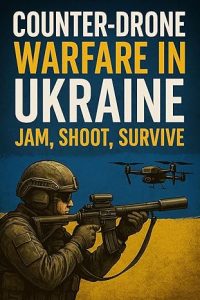1. Introduction: The New Threat and the Old Weapon
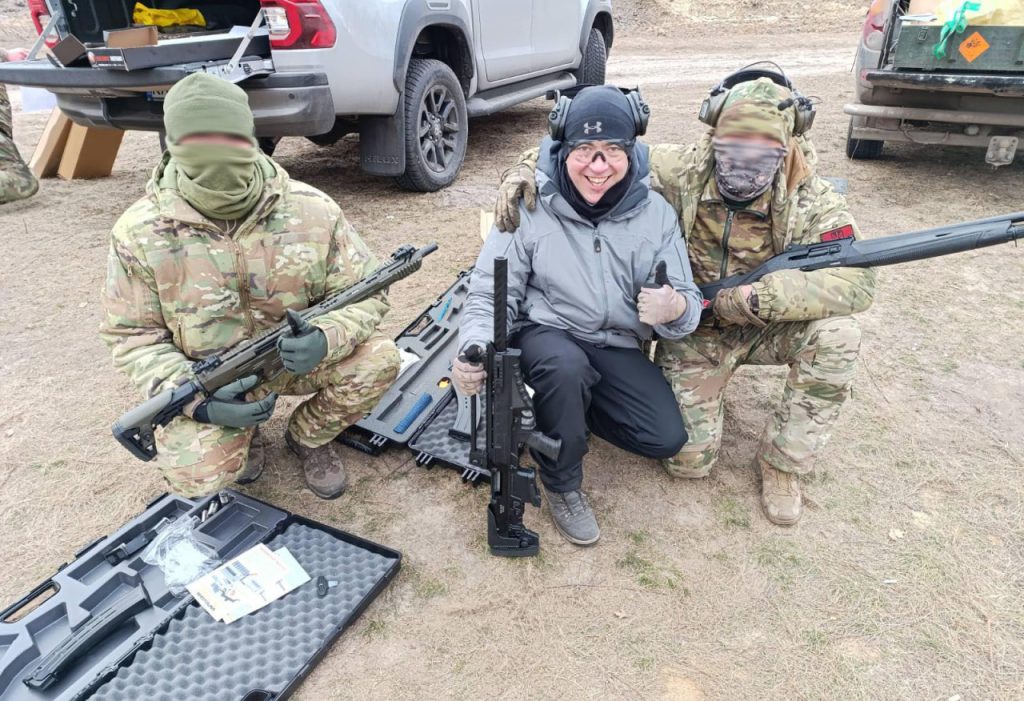
FPV drones carrying explosives (grenades, RPGs, explosives) represent a major battlefield threat.
Traditional air defense and electronic warfare (EW) systems are often too slow or uncapable to neutralize small, fast, low-flying drones.
In this environment, 12-gauge shotguns have reemerged as a last line of defense .
Shotguns are:
- Easy to acquire
- Easy to use
- Cheap
- Simple
- Effective at short range
Historical combat experience (e.g., World War I trench warfare) and recent battlefield reports confirm:
12-gauge shotguns are effective against small UAVs within close range.
2. 12-Gauge Shotgun Effectiveness by Engagement Range
Close Range (0–30 meters)
Highest effectiveness zone.
Shot cloud remains dense, lethal.
Most drones can be disabled by 1–3 shots.
Tests confirm:
Standard birdshot loads (No. 1–3) can damage rotors and electronics .
Tungsten or hardened lead shot increases kill probability .
⚡ Critical Risk: Shooting too close (<15m) can cause explosive detonation near the shooter. Immediate cover is mandatory after firing.
Even if drone was hit on a distance of 15-20 meters, it still has enough inertia and speed to fly another 10-15 meters and detonate close to a soldier.
Medium Range (30–45 meters)
Operational zone for dedicated anti-drone loads.
Birdshot spreads and loses energy; precision and ammo choice become vital.
Best solutions:
Tungsten shot, size No. 1-6 (~2.75mm).
Magnum shells (12/76mm or 12/89mm) when available. But high recoil makes consecutive shots slow and difficult.
Full choke barrels to tighten spread .
Field reports show 60%–80% probability of disabling FPV drones at 40–50 meters with appropriate loads.
Long Range (50–100 meters)
Low probability engagement.
Shot spread too wide; energy too low.
Only possible with specialized ammo and extended barrels (650mm+).
Some military shotguns (e.g., Benelli M4 A.I. Drone Guardian) attempt to push effective range to ~75 meters, but it shoud be verified in field tests on real drones.
At extreme distances, engagement priority shifts to heavier weapons or EW (if it’s effective).
Specialized Ammunition and Weapon Setup
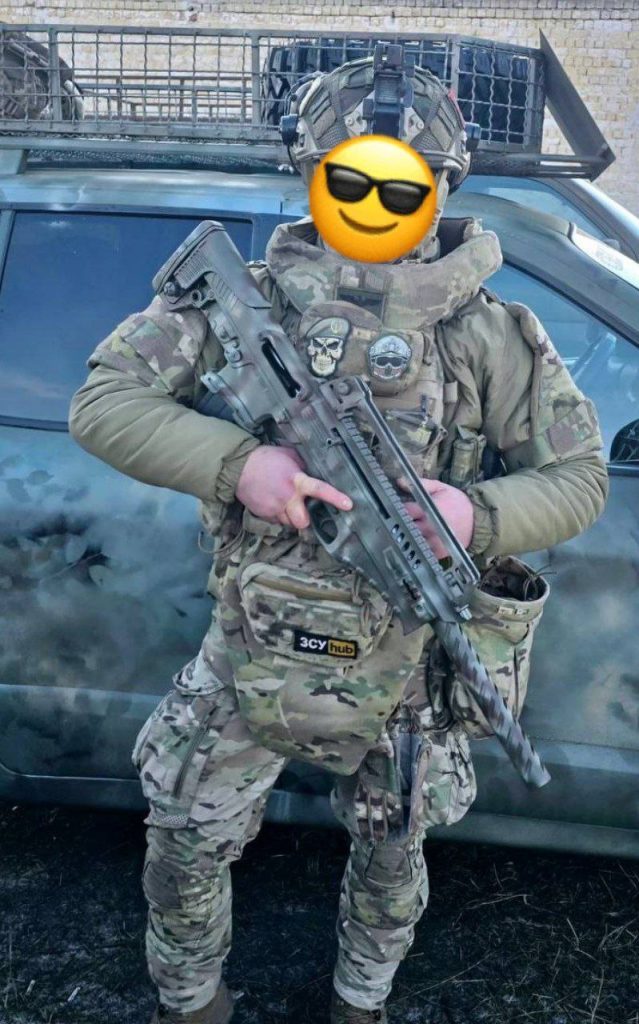
Photo from USInfantryman1 Telegram channel.
Specialized Anti-Drone Loads
Norma AD-LER 12/76: tungsten No.6 shot, ~350 pellets. In development (2025)
Hunting long range tungsten rounds. Expensive but have the best results.
SkyNet A-4 Net Rounds: deploys net to entangle drone rotors (no recent tests if effectiveness).
Tekhkrim “Perekhvat”: net-rounds with aramid fibers (widely advertised but effectiveness isn’t proven)
⚡ Net rounds: still in development, offer lower minimal risk of collateral damage, but effective mostly against hovering or slow drones on short distaces.
Hand-made wired buckshot rounds. Should be effective up to 40 meters but there’s no enough tests or information about real world use.
Choke Selection
Full choke (tightest constriction) recommended for drone engagements.
Increases shot density at medium-long distances .
Extended “tactical” chokes usually have cylyinder (no constriction), so they are not suitable for anti-drone use.
Red dot sigts
Red dot sights (holographic sights) recommended for rapid target acquisition .
Large field of view models preferred (e.g., Eotech).
⚡ Note: Optics must withstand high recoil forces from 12-gauge loads.
Military Use
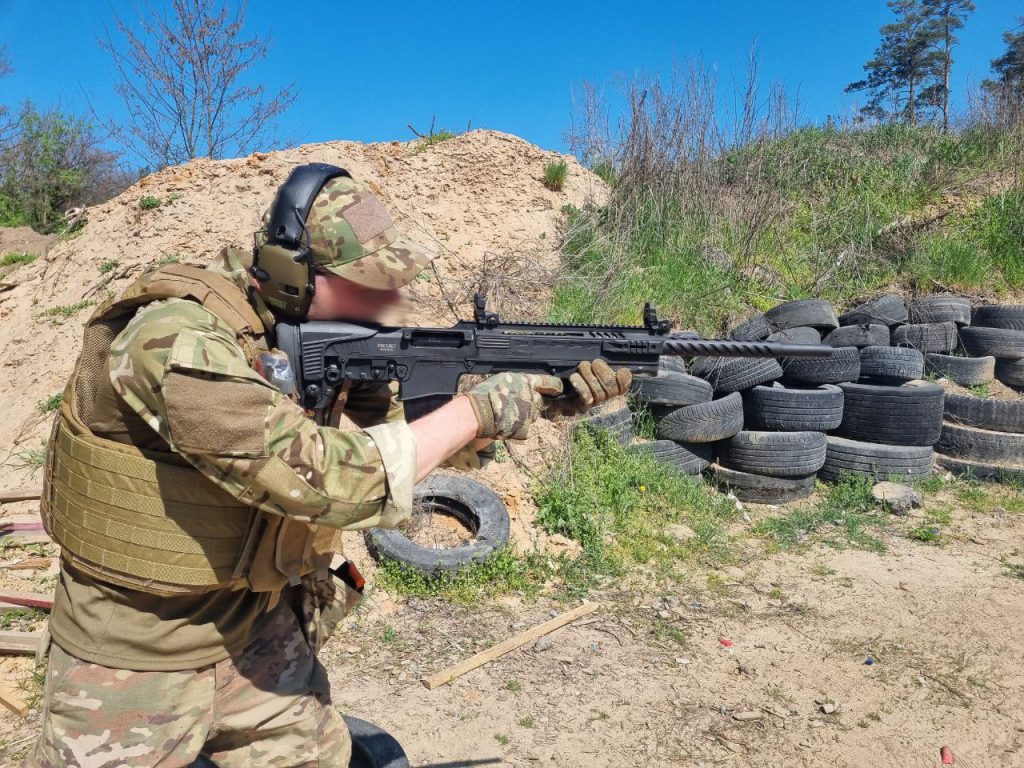
Ukrainian Armed Forces issued shotguns (e.g., HG-105, Hatsan BTS-12) specifically for counter-drone defense .
U.S. Marines train with Benelli M4 shotguns for drone interdiction.
Russian Armed Forces issue semi-automatics (MR-155, Saiga-12) for trench defense .
Dedicated military models:
Benelli M4 A.I. Drone Guardian: gas-operated, red dot sight, tactical choke, optimized for anti-drone engagements. No real world experience as of 2025.
Shotguns are integrated into platoon-level air defense systems.
Recommended Shotguns and Configurations
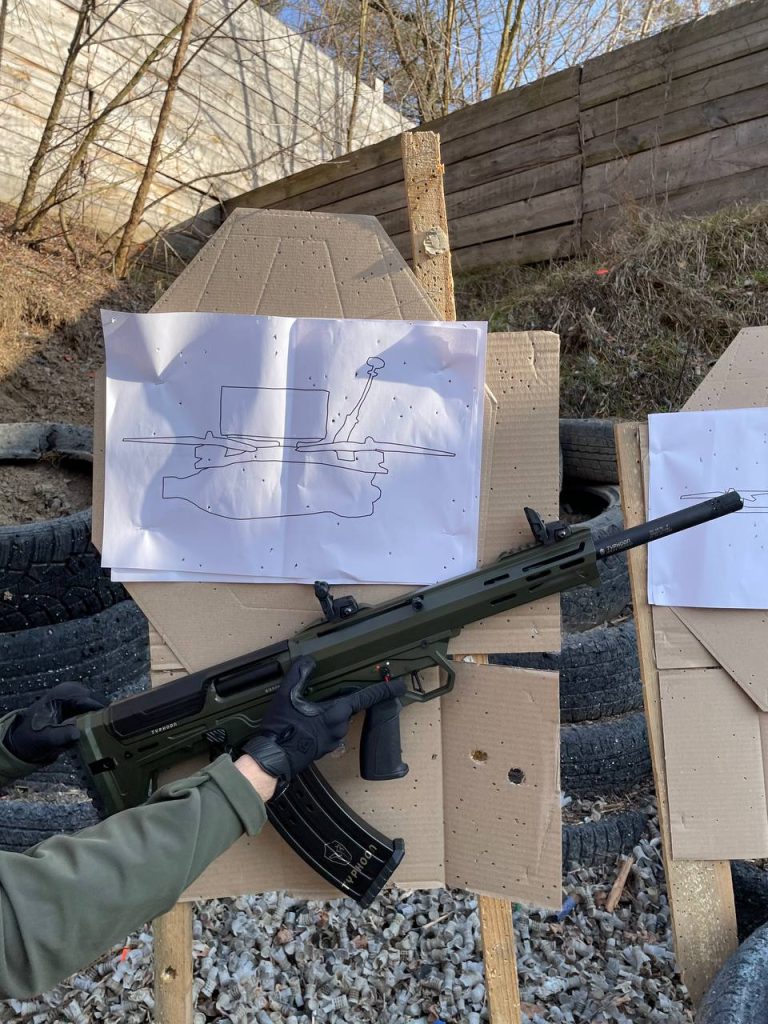
Shotgun Type: Semi-Automatic vs. Pump-Action
Semi-automatic shotguns preferred:
- Faster follow-up shots
- Minimal manual action needed
- Critical against multiple drone attacks
Pump-action shotguns:
- Simpler, cheaper, more rugged
- Slower rate of fire
- Operator must be skilled to maintain high rate of fire and reliable reloads
Recommended when resources or reliability constraints exist.
✅ Field Practice:
Elite units prioritize semi-automatic models when available (Benelli M4, Beretta 1301).
Ukrainian and russian forces use anything they can get from classic double barreled shotguns to modern box fed semi-autos.
Magazine Capacity
Larger capacity critical: 7–10 rounds minimum.
Tubular magazine extensions available (+2, +4 rounds).
Box-magazine shotguns (Saiga-12, Molot Vepr-12) allow 8–20 round quick reloads.
Advantages:
Rapid sustained fire against drone swarms.
Immediate re-engagement if first shot misses.
Ammunition Selection
Ideal load-out for FPV drones:
Main shells: Tungsten No. 1-6 (~2.75mm), heavy payload (32–36g).
Alternative: Magnum shells (12/76, 12/89) with heavy lead or steel shot (No. 1–3).
Consider: specialized ammo which is still in development by many companies.
✅ Recommended:
Tungsten birdshot rounds.
Chokes
Full choke standard for drone engagements. ❗ Check if it’s OK for steel or tungsten birdshot.
Interchangeable chokes allow mission-adaptive configurations.
Sights, Optics and Accessories
Vent rib is recommended.
Red dot sights recommended.
Tactical sling for weapon retention.
Side-saddle or buttstock shell holders for fast reloads.
✅Tsukorok (or analogues) drone detector enables soldier to be ready for drone attack.
Conclusions and Practical Recommendations
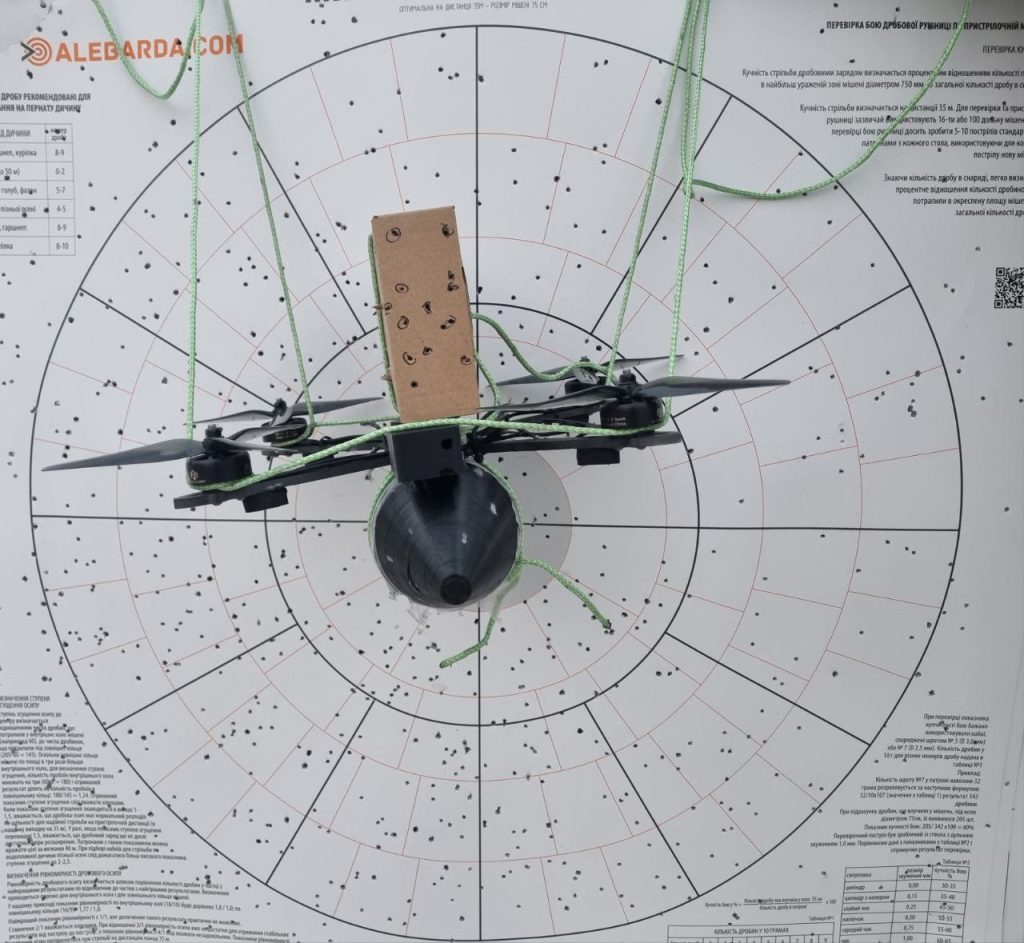
Main Findings
12-gauge shotguns remain a critical last-resort defense against FPV drones.
Maximum effective range: 30–50 meters.
Specialized ammunition (tungsten, specialized rounds) significantly increases effectiveness.
Semi-automatic shotguns with extended magazines and full chokes deliver best results.
Practical Tips for Field Use
Maintain high readiness posture: drone attacks occur with minimal warning.
Leave car and prepare firearms when drone attacks.
Train extensively on moving airborne targets (sporting clays recommended).
After firing, immediately seek cover to avoid blast radius of detonated drones.
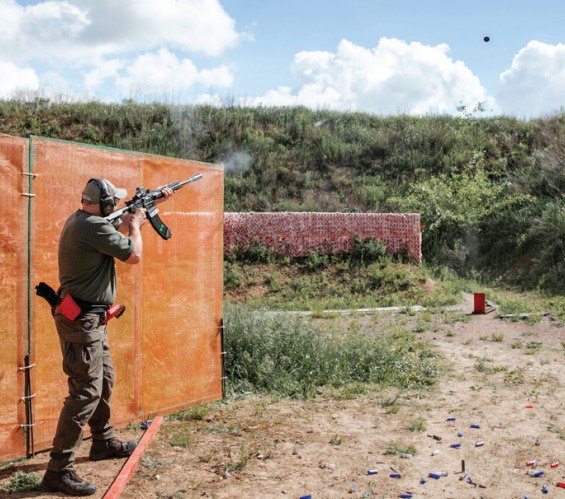
Future Trends
Expansion of dedicated military anti-drone shotguns (Benelli M4 Drone Guardian, modified Saiga-12 systems).
Development of smart chokes and specialized high-density loads.
Growing use of portable radar and early-warning systems to cue shotgun operators.
Interested in 2nd part? Please leave a comment.
Recommended book (Amazon):


